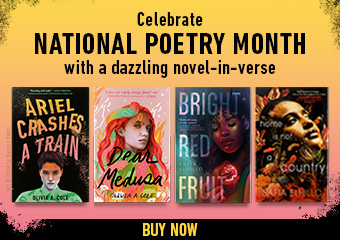All Nonfiction
- Bullying
- Books
- Academic
- Author Interviews
- Celebrity interviews
- College Articles
- College Essays
- Educator of the Year
- Heroes
- Interviews
- Memoir
- Personal Experience
- Sports
- Travel & Culture
All Opinions
- Bullying
- Current Events / Politics
- Discrimination
- Drugs / Alcohol / Smoking
- Entertainment / Celebrities
- Environment
- Love / Relationships
- Movies / Music / TV
- Pop Culture / Trends
- School / College
- Social Issues / Civics
- Spirituality / Religion
- Sports / Hobbies
All Hot Topics
- Bullying
- Community Service
- Environment
- Health
- Letters to the Editor
- Pride & Prejudice
- What Matters
- Back
Summer Guide
- Program Links
- Program Reviews
- Back
College Guide
- College Links
- College Reviews
- College Essays
- College Articles
- Back
Behind The Iron Curtain MAG
The Iron Curtain , three words that conjure up a sense of fear and mystique. What really goes on behind the barbed wire? Unfortunately, few Americans have ever learned the answer. However, this past July, my parents and I traveled through East and West Germany, Poland, Hungary, Austria, and Czechoslovakia.
Although we did not have much time in Frankfurt, we found it an industrial city, with many American companies, such as Digital Equipment, Wang, and Woolworth.
We traveled through Germany to West Berlin, also a western city with shopping malls, souvenir shops, and even Burger King, McDonald's, pizza parlors, and American clothing stores.
Next we saw the Berlin Wall which was covered with graffiti. The primary themes of the graffiti seemed to be "peace," "tear down the wall," and "go home, Nazis." We also saw crosses nearby which serve as monuments to those who attempted to escape from East Berlin, but were shot in the process. In fact, a few weeks before we visited, a young man was shot trying to escape over the Wall.
One afternoon, as we approached the border between East and West Berlin, we were told not to take pictures. Outside, we could see watchtowers where men with binoculars watched us.
In East Berlin, our guide, a staunch Communist, gave us the official party word for everything. We saw numerous Russian war memorials. What really surprised me about East Berlin was the construction. Everywhere I looked, something was being built.
On the way to Warsaw, we glimpsed the Polish countryside, with its tiny farmhouses that looked unchanged in a hundred years. In the fields, we saw entire families working together. We passed a milkman in a horse-drawn buggy and several old women in traditional dress.
Our Polish country guide really surprised me. Although he was an official government guide, he was a member of Solidarity and couldn't stop talking about how awful the Communist system was. I was amazed to find that the Polish have the right to free speech.
Warsaw was grim. All of the buildings were built of poured concrete erected quickly after World War II.
We then visited Czestokowa and Auschwitz where we visited the Monastery of Jasna Gora which contains the Black Madonna. The friar who guided us sold Solidarity pins and severely criticized the Communist system.
At Auschwitz we saw the barracks where the prisoners lived, the clothing, glasses, and shoe polish confiscated from prisoners, hair taken from dead women, the crematorium, and the train tracks where the trains carrying prisoners arrived. The concentration camp was intact and is now a museum.
The stores in Poland had little merchandise. Often, they would not have everything in stock which was displayed in the windows.
Although I saw no food lines, I did see lines for the butcher shop, for vodka, and lines stretching several blocks for exit visas to the United States and Canada. When I peered inside the butcher shop, all I saw was a piece of old meat, a saus-age, and a sorry-looking chicken.
Prices in Poland were extremely cheap. A four-course meal cost about eighty cents. A bottle of Coca Cola was four cents and a cup of coffee was a dime.
Polish fashion seemed particularly influenced by American clothing. Unfortunately, they never copied the clothes quite right. One shirt I saw said, "Boston. Play Football. NBA." Another said, "NFL - American Football League."
Budapest seemed very Western. The red stars were coming down, the May Day parades were over, and there was even a McDonald's. As I expected, Budapest was very pretty. Although it appeared prosperous, we learned that the people are actually very poor.
Our last stop was Prague. This city is even more beautiful than Budapest. Walking into the old section of Prague is like stepping into a previous century. Although the people are more prosperous than Poland, they do not have free speech.
All in all, my trip behind the Iron Curtain was an experience that I will remember forever. I hope that more Americans will visit the Eastern Bloc nations and learn how lucky we Americans really are. n
Editor's Note: We thought this article would be of interest due to all the recent changes in policy in East Germany and throughout the Iron Curtain countries.
Similar Articles
JOIN THE DISCUSSION
This article has 1 comment.

0 articles 0 photos 12292 comments